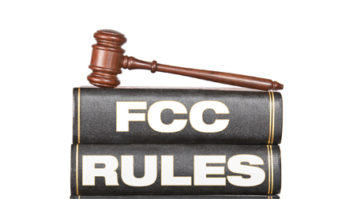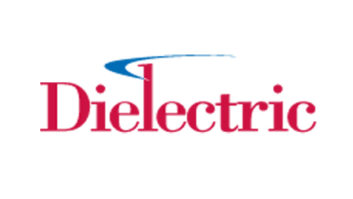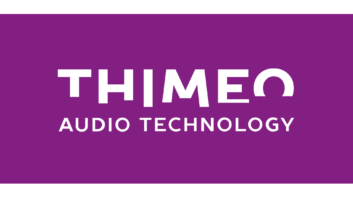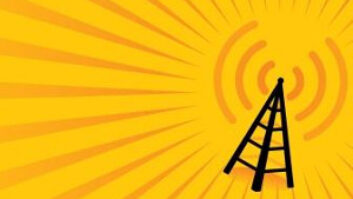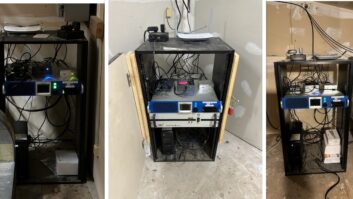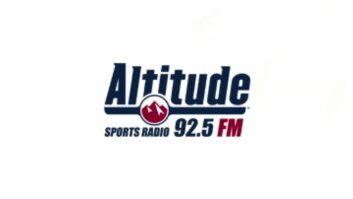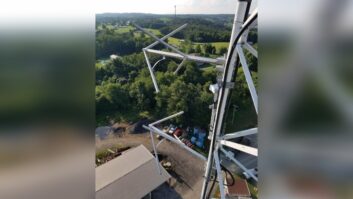An effort to seek regulatory approval for a voluntary increase in authorized FM IBOC power levels is up in the air.
According to engineering sources outside of the trade association, factions within NAB disagree on the content and best timing of an industry proposal, with engineers hoping to move forward and its legal department putting on the brakes.
One of those sources said the power level issue raises questions within NAB about how to view the FM spectrum itself.
A digital power increase could be controversial because with elevated power levels comes the potential for interference to neighboring stations, engineers say.
John Marino, vice president of NAB Science & Technology, in March said he wasn’t sure of the timing of a power increase request, due to “other things to take care of” before the spring show. He also could not say there definitely would be a request to the FCC at all.
“There are still some issues being discussed,” Marino said, without disclosing details. Certainly IBOC power will be a topic of conversation at the convention, he added.
Why do this?
The impetus behind the effort came from major broadcast groups participating in the HD Radio rollout.
Raised FM IBOC Power Testing StatsCBS Radio, Clear Channel Radio and Greater Media conducted several tests in the fall of 2007 to determine effects of increasing FM IBOC power levels.
The first part of the testing, conducted by Ibiquity Digital and signed off on by Hammett & Edison, looked at the digital coverage increase at the higher power level, comparing digital coverage at 20 dB below analog power and 10 dB below analog power level.
Tests occurred September in three geographic areas with differing terrain characteristics: Detroit; New York, Connecticut and Rhode Island; and Los Angeles, San Diego and Santa Barbara.
Grandfathered short-spaced stations were included in testing, stations that were only 40 miles apart, rather than the required 100 miles of separation. The testing showed “significant improvement in digital coverage even in interference environments,” said one engineer.
Super-powered FMs also were tested.
Though test results hadn’t been released publicly as of late March, in all cases, according to documentation obtained by Radio World, the increased digital power level “significantly improved” digital coverage — such as by 26 percent in Connecticut and by 33 percent in Detroit.
Even with increased digital power levels, the FCC spectrum mask would still be maintained, according to the results.
Results reportedly show the higher power level would not cause “unacceptable interference” in most circumstances, even outside a station’s protected contour.
Several papers in the Broadcast Engineering Conference during the NAB convention relate to the elevated FM digital power issue, including one by Glynn Walden of CBS Radio about building penetration.
They include “A New Approach to Peak-to-Average-Power Reduction for FM IBOC Transmission” by Philipp Schmid of Nautel; “An Improved Coverage Prediction Method for HD Radio” by John Kean of NPR Labs; “Bandwidth & Frequency Allocation Issues in International Digital Radio AM & FM broadcasting,” by Chuck Kelly of Nautel; “RF Signal Performance Measurements of Consumer FM Receivers and Coverage Effects” by John Kean; “Implications of IBOC Injection Levels above –20 dB,” by Gary Liebisch of Nautel; and “FM IBOC Building Penetration Tests at Elevated Digital Subcarrier Levels,” by Glynn Walden of CBS Radio.
—Leslie Stimson“It’s generally acknowledged that, in many cases, the digital FM coverage is more abbreviated than analog,” said Greater Media Vice President of Radio Engineering Milford Smith.
“If HD Radio will be the ultimate replacement for analog and ubiquitous, it needs to be close to what coverage we had” with analog, he said.
The digital signal at present generally is seen as delivering better than good stereo coverage but not quite as good as mono coverage. Proponents seek an up to 10 dB increase in digital power, and the hope is that for the first time since stations began transmitting both an IBOC signal in addition to the analog signal, the coverage of both signals would be equal.
A 10 dB increase is a 10 times increase in digital power. “This is like 60 kW instead of 6 kW in the analog world,” said one engineer.
Existing FM stations transmitting both digital and analog are required to set the IBOC power level 20 dB below the analog power level.
One area of concern with the FM digital signal is reception on portable devices that are expected by IBOC proponents to come on the market later this year.
Portables typically have small antennas. A car or clock radio can have a long antenna, but a portable may have an internal one that won’t pick up as much signal in the same RF environment.
“In most portables, the antennas are essentially half of a dipole with no ground plane,” said one expert, who added it’s essentially like having half of an antenna in a moving device. Proponents said boosting digital FM power would help IBOC reception on portables.
A digital power increase could also help IBOC signals penetrate buildings.
“We generally see 8 to 10 dB attenuation just because of building material,” like steel and concrete, one engineer said. A spectrum analyzer inside such a building typically shows a 10 dB lower reading for the digital signal, he said.
The noise floor, such as RF noise from power sources such as computers and lighting, hits the digital signal more noticeably because it’s 20 dB lower than the analog signal, according to IBOC experts. And while the IBOC carriers are durable, it gets harder to recover the waveform when those RF noise sources increase.
Testing
CBS Radio, Clear Channel Radio and Greater Media — with some assistance from Ibiquity Digital — tested the elevated FM digital power levels in two parts on some 13 stations using experimental authorizations (see sidebar).
Public radio is studying the issue as well.
NPR Labs is studying a variety of IBOC coverage improvements, including elevated power, and will have more to say about this research at the upcoming NAB Broadcast Engineering Conference.
In March, the group said it is still evaluating the difference between analog and digital coverage, and it’s premature to say how NPR Labs will come down on the power increase, according to Senior Technologist John Kean and VP/CTO/Executive Director Mike Starling.
Although NPR Labs’ investigations into this area coincided with field testing carried out by the three big commercial broadcast groups, NPR Labs was not involved in that study.
“Only when we’re comfortable with our independent studies and feel confident about more fully understanding the science of the digital radio coverage improvement options and interference consequences will we adopt a position on the matter,” said Starling and Kean in a statement.
“As part of our year-long research project, three basic avenues of potential HD-R improvement have been studied: (1) receiver and receiving antenna performance, which poses no risk of increased interference; (2) single-frequency networks, i.e., boosters; and (3) increased digital sideband power.
“Given the potentially closer spacing afforded by contour protection allocations in the educational reserved FM spectrum, the second strategy poses the least risk of objectionable interference to first-adjacent analog stations, a fairly important consideration since 99 percent of our listeners are still tuned to the analog signal only.”
‘It’s optional’
Certainly the initiative, though not yet at the level of an official FCC request, has its critics, who cite potential for increased interference as well as increased implementation costs.
One wrote on an engineering listserv: “The NAB has determined that they ‘think’ the increase to 10 percent will work without interference or damage to the analog. They haven’t said they’re sure. How do you go to the FCC without being able to document your claim?”
Another engineer said in an interview that an FM power increase would result “in a replay of the AM [interference] problem.”
One technical observer said the trick is to find the appropriate higher power level and yet avoid host interference to the analog carrier from the collocated digital subcarriers — and without negatively affecting another desired improvement, digital boosters.
Some stations don’t have the headroom needed to implement the power increase in their transmitters, sources said, while other stations could experience self-interference due to more strict transmission system performance requirements. Another possible shortfall is increased interference to first-adjacent-channel analog listeners.
It so happens that a 10 dB increase in the digital power is 10 times the amount of power, according to several sources, meaning a corresponding increase in power consumption. That costs.
“It’s important to note that [if approved], it’s optional,” said Smith. “Because it costs money. Not everybody will want to do it.”
Implementation costs would depend on how a station has its IBOC system set up, he said. Low-level combining of the analog and digital signals before the power amplifier may work for this purpose using a dual-fed antenna designed for digital and analog inputs, he said.
Two efforts reportedly will be announced at the show to make HD Radio implementation more affordable.
Smith said that Greater Media would think about implementing a 10 dB increase, characterizing the net coverage improvement at his company’s test stations as “very significant,” both in the size of the coverage area and the robustness of the signal in that area.
The digital power increase “is an issue that needs to be out there and discussed,” he said. “This is a possible enhancement to HD Radio that needs a good airing.”





